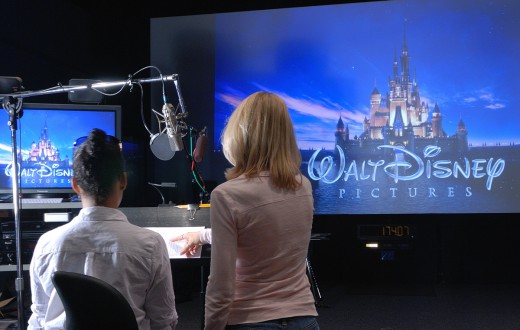Smiles are not just expressions of happiness; they are complex signals that can convey a spectrum of emotions, intentions, and subtleties. Understanding and mastering different kinds of smiles is essential for actors who aim to deliver nuanced and compelling performances. In this article, we will explore the various types of smiles and how to effectively incorporate them into your acting repertoire.
The Genuine Smile
Also known as the Duchenne smile, named after the French neurologist Guillaume Duchenne, this smile is characterized by the involvement of both the zygomatic major muscle (which raises the corners of the mouth) and the orbicularis oculi muscle (which causes the eyes to crinkle). It’s a natural, spontaneous smile that genuinely reflects happiness or joy.
Acting Tip: To practice the genuine smile, think of a joyful memory or something that genuinely amuses you. The key is to let the smile spread naturally across your face, reaching your eyes. This type of smile is perfect for scenes that require a sincere expression of happiness or affection.
The Polite Smile
This smile is more controlled and less intense than the genuine smile. It’s often used in social situations where you need to appear friendly or agreeable but may not necessarily feel deep joy. The polite smile primarily uses the zygomatic major muscle and does not reach the eyes.
Acting Tip: To master the polite smile, practice raising the corners of your mouth slightly without engaging your eye muscles. This smile is ideal for scenes where your character needs to display courtesy or maintain a façade of politeness, despite their true feelings.
The Forced Smile
The forced smile is similar to the polite smile but often appears more strained and less natural. It’s the kind of smile people use when they’re trying to hide their true emotions or when they feel obligated to smile.
Acting Tip: When practicing the forced smile, think of a situation where you felt compelled to smile despite feeling otherwise. Pay attention to the tension in your face and how it differs from more genuine smiles. This type of smile is useful in scenes where your character is under stress or attempting to conceal their true emotions.
The Sad Smile
A sad smile is a complex expression where traces of sadness are visible despite the upward curve of the lips. This smile can convey a range of emotions, such as resignation, bittersweet feelings, or a deep-seated sorrow masked by a façade of happiness.
Acting Tip: To convey a sad smile, start with a slight smile and then let your eyes and the rest of your face express the underlying sadness. This may involve a slight furrowing of the brow or a less vibrant sparkle in the eyes. Use this smile in scenes where your character is trying to stay strong or optimistic in the face of adversity.
The Smirk
The smirk is a one-sided smile that can convey arrogance, smugness, or sarcasm. It’s a more subtle and nuanced expression that can add depth to a character’s persona.
Acting Tip: To create a smirk, lift one corner of your mouth slightly. The expression should be controlled and not spread too widely across the face. Practice in front of a mirror to ensure that your smirk conveys the intended emotion without becoming a full smile. This expression is perfect for characters with a more cynical or witty edge.
The Playful Smile
This smile is light-hearted and fun, often seen in moments of playfulness or teasing. It’s characterized by a bright expression and light in the eyes.
Acting Tip: Think of a moment when you were teasing a close friend or playing a light-hearted prank. Capture that sense of mischievous joy in your smile.
The Nervous Smile
A nervous smile is one that conveys anxiety or unease. It might be accompanied by a rigid jaw or a quick glance away.
Acting Tip: To convey a nervous smile, combine a slight smile with signs of tension in the rest of your face. Practice holding a smile while also showing signs of stress or discomfort.
The Contemptuous Smile
This smile is slightly similar to a smirk but with a more disdainful edge. It might be used to express scorn or derision.
Acting Tip: Focus on lifting one side of the mouth slightly in a mocking manner. This smile should convey a sense of superiority or disdain.
The Flirtatious Smile
This smile is often more subdued and coy, used to express interest or attraction. It might be accompanied by lowered eyelids or a tilted head.
Acting Tip: Practice a soft, inviting smile, possibly with a quick glance from under your lashes. The key is subtlety and suggestion.
The Reassuring Smile
A smile used to comfort or reassure someone else, often accompanied by warm eye contact and a gentle expression.
Acting Tip: Think of a moment when you had to comfort a friend. Your smile should be soft and gentle, aiming to convey empathy and reassurance.
The Triumphant Smile
This smile expresses a sense of victory or accomplishment. It’s broad and confident, often showing teeth.
Acting Tip: Recall a moment of personal victory or success to embody this smile. Let your joy and pride radiate through your expression.
The Pensive Smile
A more subdued, thoughtful smile, often seen when someone is reflecting on a pleasant memory or idea.
Acting Tip: Combine a slight smile with a faraway look in your eyes, as if you’re lost in a happy thought.
The Sarcastic Smile
This smile can be similar to a smirk but is often more pronounced. It’s used to convey irony or sarcasm.
Acting Tip: Practice a smile that doesn’t quite reach your eyes, indicating that the sentiment is not genuine.
Here are some famous actors and films where these types of smiles have been prominently featured, providing excellent study material for actors looking to enhance their expressive range:
1. The Genuine Smile
- Actor: Julia Roberts
- Film: “Pretty Woman” (1990)
- Context: Julia Roberts, known for her radiant smile, showcases a genuinely joyful smile in several scenes, notably the famous scene where her character laughs uproariously at a joke while at a polo match.
2. The Polite Smile
- Actor: Anne Hathaway
- Film: “The Devil Wears Prada” (2006)
- Context: Anne Hathaway’s character frequently employs a polite smile to navigate the demanding and often uncomfortable situations in the high-stress fashion magazine environment, especially in interactions with her boss, played by Meryl Streep.
3. The Forced Smile
- Actor: Leonardo DiCaprio
- Film: “The Great Gatsby” (2013)
- Context: Leonardo DiCaprio’s character, Jay Gatsby, often flashes forced smiles to maintain his enigmatic public persona, concealing his inner turmoil and unfulfilled desires.
4. The Sad Smile
- Actor: Meryl Streep
- Film: “Sophie’s Choice” (1982)
- Context: Meryl Streep delivers a powerful performance featuring sad smiles, particularly in the heart-wrenching scenes where her character recalls past traumas, conveying a mix of nostalgia, sorrow, and regret.
5. The Smirk
- Actor: Ryan Gosling
- Film: “Drive” (2011)
- Context: Ryan Gosling’s character uses smirks in various scenes to convey his character’s confidence, control, and sometimes, a sense of irony, especially in interactions with other characters in the film.
6. The Nervous Smile
- Actor: Jesse Eisenberg
- Film: “The Social Network” (2010)
- Context: Jesse Eisenberg’s portrayal of Mark Zuckerberg includes nervous smiles, especially in scenes where his character faces legal battles and confrontations, reflecting anxiety and discomfort.
7. The Sarcastic Smile
- Actor: Robert Downey Jr.
- Film: “Iron Man” series (2008-2013)
- Context: Robert Downey Jr.’s Tony Stark character often uses sarcastic smiles, particularly when delivering witty comebacks or handling tense situations with humor, adding depth to his character’s charisma and intelligence.
8. The Triumphal Smile
- Actor: Sigourney Weaver
- Film: “Aliens” (1986)
- Context: Sigourney Weaver’s character, Ellen Ripley, displays triumphant smiles, especially in scenes where she overcomes challenges or defeats adversaries, conveying a sense of victory and relief.
9. The Contemptuous Smile
- Actor: Anthony Hopkins
- Film: “The Silence of the Lambs” (1991)
- Context: Anthony Hopkins’ portrayal of Hannibal Lecter includes contemptuous smiles, particularly in scenes where he interacts with Clarice Starling, conveying a sense of superiority and disdain.
10. The Melancholic Smile
- Actor: Bill Murray
- Film: “Lost in Translation” (2003)
- Context: Bill Murray’s character often displays melancholic smiles, reflecting his character’s inner loneliness and existential contemplation, despite the outwardly humorous context.
These examples further illustrate the range of emotions and character traits that can be communicated through different types of smiles. By studying these nuanced expressions, actors can enhance their ability to convey complex emotions and create more dynamic and relatable characters.
In Conclusion
Understanding the nuances of different smiles can significantly enhance your acting skills, allowing you to convey a broader range of emotions and character traits. Practice these smiles in front of a mirror, and incorporate them into your character studies and scene work. Remember, the most compelling performances are those that capture the complexity and richness of human emotion, and mastering the art of the smile is a key step in that journey. Happy acting!







